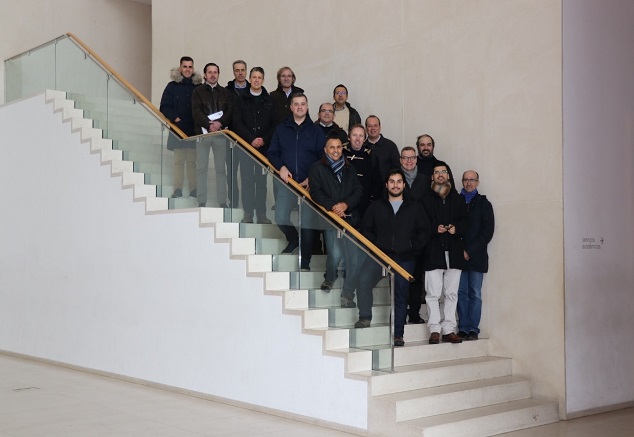The final phase of the "Study on the Licensed Shared Access (LSA) Spectrum Sharing Model", promoted by ANACOM, was conducted from 28 to 30 January 2019, at Instituto de Telecomunicações (Telecommunication Institute), on the University of Aveiro campus. with the participation of a range of partners.

Team participating in the tests in Aveiro
ANACOM’s partners in this study are:
- Mobile Operators: MEO, NOS, Vodafone Portugal;
- Television operators: RTP, SIC, TVI;
- Industry: Huawei, Nokia and Fairspectrum;
- Research and development (R&D): IT - Instituto de Telecomunicações (Institute of Telecommunications).
This pilot project aims to evaluate implementation of the LSA model in the 2.3 - 2.4 GHz band, from a practical point of view and in the light of the realities of the Portuguese situation; a technological demonstrator was created as proof of concept for this purpose.
In this context, and with the cooperation of all participating entities, a pilot test network was deployed in Aveiro, comprising:
- 2 base stations (eNode-B's) from NOS and MEO, with LTE-DTT technology from Nokia and Huawei;
- 2 prototypes of warning sensors to indicate the need to release spectrum for priority use (of incumbent operators, in the Portuguese case, television operators), comprising 100% Portuguese technology developed by IT;
- 2 systems for the transmission and reception of digital radio links from RTP and TVI, and respective systems for capturing sound and image and for monitoring operations;
- Core test network of NOS, controlled by its management and operations support centre (located in Póvoa de Santo Adrião);
- 1 LSA controller and repository of Fairspectrum (located in Ireland and Finland);
- Mobile terminals (smartphones) and their SIM cards, made available by NOS and MEO and configured especially for this pilot test network.
In an environment of beneficial and close collaboration between all partners, the prototype of the warning sensor was successfully tested, proving itself fundamental in a hypothetical scenario where the LSA model is implemented in Portugal.
Calls were successfully made between mobile terminals using this pilot network and, in addition, it was verified that all implemented control mechanisms functioned as expected - in particular, disconnection of the mobile network, whenever the television operator indicated its intention, with the help of the prototype developed by IT, to use the spectrum previously occupied by the mobile network, as well as reconnection of the mobile network once television operations ceased.
The data collected is now being carefully analysed so that it can be released soon.
Given that the paradigms of spectrum usage over the medium-term will tend to focus more on spectrum sharing among the various radiocommunications systems, as a principle rather than as an exception, technological and regulatory solutions need to be found that allow for this implementation. It is in this context, in anticipation of these technological challenges, that ANACOM is currently promoting tests of the LSA sharing model.
At the last meeting of the Radio Spectrum Policy Group (RSPG) - a high-level advisory group which assists and advises the European Commission on issues related to radio spectrum policy, ANACOM reported on this pilot project and on the progress of ongoing work.
This pilot project was also a news https://www.etsi.org/newsroom/news/1571-etsi-licensed-shared-access-specifications-for-a-trial-in-portugal-to-support-5g-deployment?fbclid=IwAR3azS0lM1lj4g2cgzIWua4F3isDondUhm-zUAbqZ8S_7bMlFpFNmpx140I item on the website of the European Telecommunications Standards Institute (ETSI).




